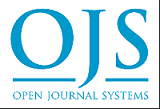Innovative warm blanket solution for inadvertent hypothermia among post-anesthesia patients
DOI:
https://doi.org/10.33024/minh.v7i3.286Keywords:
Post Anesthesia, Shivering, Warm BlanketAbstract
Background: Shivering helps the body maintain its core temperature but can have harmful effects, such as increasing the oxygen demand in brain tissue. It frequently occurs in patients after anesthesia due to various factors.
Purpose: To prove the effect of providing innovative warm blankets to treat shivering in post-anesthesia patients.
Method: This quantitative quasi-experimental research with a pretest-posttest with control group design used purposive sampling to select 60 participants, who were divided into 2 groups: 30 participants in the treatment group and 30 participants in the control group. The treatment group received an intervention with an innovative warm blanket, while the control group received an intervention with a standard warm blanket according to the hospital's standard operating procedures. The measurement data were accumulated and analyzed using the Mann-Whitney test, and Cohen's effect size was used to assess the influence and differences between the innovative warm blanket and the standard hospital warm blanket.
Results: The temperature in the intervention group, which received the innovative warm blanket treatment, rose by 2.050°C (p=0.001). In contrast, the temperature in the group that received the standard hospital warm blanket treatment increased by 1.80°C (p=0.001).
Conclusion: Innovative warm blankets result in a greater temperature increase compared to the standard warm blankets used in accordance with hospital protocols.
Downloads
Published
How to Cite
Issue
Section
License
Copyright (c) 2024 Malahayati International Journal of Nursing and Health Science

This work is licensed under a Creative Commons Attribution-ShareAlike 4.0 International License.









